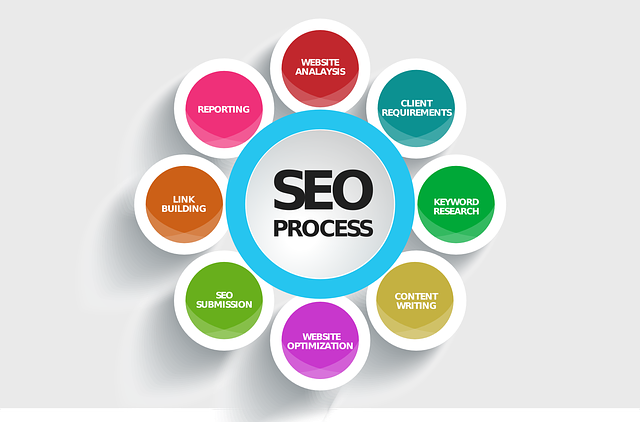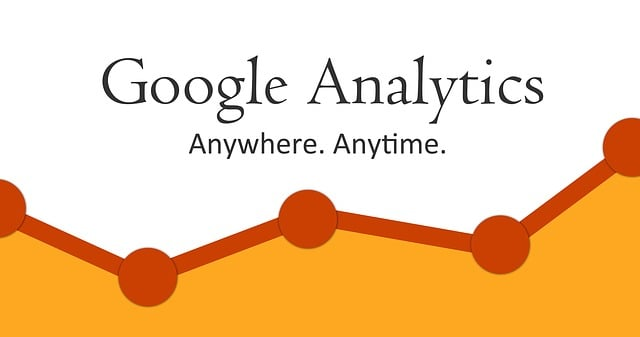We’ll increase conversions by
20-100+%
on your website.
Get a FREE Audit today
See how we can help your business increase conversion rates
Understanding Google Optimization: A Comprehensive Guide To A/B Testing And Website Optimization

Introduction
Are you looking to improve your website’s traffic and conversion rates? Look no further than Google Optimize, a powerful tool for A/B testing and website optimization. With features like split testing and a personalization tool and tools, Google Optimize offers small businesses the opportunity to create engaging customer experiences that drive revenue.
In this comprehensive guide, we’ll cover everything you need to know about using Google Optimize for successful A/B testing and website optimization. So if you’re ready to optimize your site’s performance, keep reading!
Website Optimization And A/B Testing
Website optimization and A/B testing are crucial for ensuring that businesses can deliver the best possible user experience to their customers, which in turn drives engagement, improves conversion rates, and ultimately boosts revenue.
What is A/B Testing?
A/B testing is a method of comparing two versions of a webpage or app against each other to determine which one performs better. It involves presenting two different variations of a design, A and a B test them, to users at random and measuring the performance of both versions against predetermined goals. The main purpose of A/B testing is to gather insights into user behavior and preferences in order to optimize website design and increase conversion rates.
The process eliminates guesswork from website optimization by enabling data-backed decisions made by experienced optimizers. By conducting controlled experiments with real customers, website owners can understand what works best for their target audience based on actual user behavior rather than just assumptions. This helps them improve the overall user experience and increase the probability of achieving desirable outcomes such as sales or lead generation.
Benefits Of Website Optimization
Website optimization brings a wide range of benefits to businesses. First and foremost, it improves the overall user experience by making the website more engaging, easy-to-use, and faster. This not only enhances customer satisfaction but also increases the likelihood of visitors returning to your site or converting into customers. Secondly, optimizing a website can lead to higher search engine rankings, which helps in attracting organic traffic from potential customers who are searching for products or services similar to yours.
Another benefit is that website optimization can help reduce bounce rates – i.e., users leaving your site prematurely – since optimized sites load faster and provide better user experiences. With lower bounce rates comes increased conversion rates which translate into greater revenue generation for businesses.
Lastly, A/B testing allows companies to experiment with different variations of their pages and optimize them based on data-backed insights. This leads to higher engagement levels from existing customers and attracts new ones as well. Overall, the benefits of website optimization make it an essential component for online success in today’s digitally-driven age where every business wants an edge over its competition.
Understanding What Google Optimization Is

In this section, we will explore the critical factors that drive Google’s search ranking algorithm and best practices for optimizing your website to rank higher. Understanding these concepts is crucial for businesses looking to improve their online visibility and attract more customers. Keep reading to learn how you can leverage Google optimization techniques to boost your website’s performance!
Google’s Search Ranking Factors
Understanding Google’s search ranking factors is essential to achieving a high position in search engine results pages. Relevant, high-quality content is the most important factor in SEO, as it provides value and relevance to users. Keyword placement, use of internal and external links, and image optimization also play crucial roles in improving rankings.
On-page optimization is equally important for better visibility on Google. This involves optimizing title tags, meta descriptions, headings, and URLs with relevant keywords to make them more meaningful to both users and search engines. Additionally, having a mobile-friendly website with good loading speed can help improve user experience and ultimately lead to higher rankings.
It’s important to note that there are over 200 ranking factors used by Google’s algorithm when determining web page top rank. These include factors such as site security (HTTPS), domain age and authority, social signals from Facebook/Twitter/LinkedIn/Pinterest/etc., schema markup implementation for structured data (rich snippets), site architecture/design/layout usability including menu structure/navigation hierarchy etc., backlinks from trusted sources-authoritative sites or influencers within your niche/causes related interests/topics of readership/subscribership).
Best Practices For On-Page And Off-Page Optimization

On-page optimization involves optimizing factors directly on a website, including web page, titles, meta descriptions, headers or tags, and content. A crucial step in on-page optimization is to ensure that every webpage has unique and relevant content. Google rewards websites for providing users with high-quality and unique content by ranking them higher in search results. Another essential aspect of on-page optimization is ensuring that web pages have proper keyword placement without overstuffing keywords.
Off-page optimization refers to activities performed outside of the website to improve its visibility in search engine rankings. The most important off-page factor is backlinks from other credible sites related to your business niche or industry. Backlinks indicate relevance and authority, which can significantly impact how Google perceives a site’s expertise on certain topics or industries. Social media engagement also plays a vital role in off-page SEO as it helps build brand awareness and amplify online presence across multiple platforms.
To achieve effective SEO practices and optimize account, for both On-Page and Off-Page Optimization, businesses must focus not only on creating great content but also establishing strong relationships with their audience via social media interaction. By building these connections through various digital channels such as email campaigns or engaging blog articles, companies are better prepared for success when testing potential strategies with tools like Google Optimize while continually improving their overall SEO performance using critical KPIs like organic traffic growth rates over time!
Importance Of User Experience And Mobile-Friendliness
User experience and mobile-friendliness are essential factors in Google optimization. A good user experience means designing a website that is easy to navigate, with clear calls-to-action and information hierarchy. Poorly designed sites can frustrate users, leading to high bounce rates and low engagement levels.
Mobile-friendliness is equally important because of the growing number of people using mobile devices to access websites. Sites that are not responsive or optimized for mobile viewing risk losing traffic and hurting their search engine rankings. As such, it is important to ensure your website is fast-loading on both desktops and mobile devices, with clean layouts that are easy to read on smaller screens.
Overall, focusing on improving user experience and optimizing for mobile users can significantly improve website performance metrics, including conversion rates, time spent on site,and overall traffic numbers. By implementing these strategies along with other SEO best practices, businesses will be able to see tangible results from their efforts toward better Google optimization.
A/B Testing And Website Optimization With Google Optimize

Google Optimize offers a powerful A/B testing and website optimization platform, allowing businesses to test different designs, messaging, and user experiences to determine the best performing variant. Learn more about free tool and how Google Optimize can help improve your website traffic and customer satisfaction by reading on!
Overview Of Google Optimize And How It Works
Google is not just a search engine, it’s also a tool for website optimization. With Google Optimize, businesses can test different website variations to see what works best for their audience.
It is free tool that’s easy to use and offers split testing, personalization tools view reports, and much more. In this comprehensive guide, we’ll take you through everything you need to know about A/B testing with Google Optimize and how it can help improve your website traffic. So let’s get started!
Setting Up An Experiment In Google Optimize
Setting up an experiment in Google Optimize is a straightforward process. First, users need to create an account and install the Google Optimize tracking code on their website. Once installed, they can start creating experiments by clicking the “Create Experiment” button and choosing from three essential types of testing – A/B testing, multivariate testing, and redirect tests.
Next, users use google optimize and can set up experiment objectives based on the conversion goals they want to achieve. They can use google optimize to define specific metrics like page views, clicks or sign-ups and use them as primary objectives for measuring test effectiveness. Additionally, with advanced reporting features available in paid versions of Google Optimize such as enterprise version offers more advanced reporting that includes session duration or anti-flicker snippet analysis.
Finally, users can create variations of their existing web pages using the visual editor built into Google Optimize. With this tool’s drag-and-drop interface functionality allows marketers without development experience to make dynamic changes easily. After making changes to their web pages or elements (such as headlines or images), users can preview each variant before setting it live for all visitors with one click.
Overall Setting up an experiment with Google Optimizer is relatively simple thanks to its intuitive user interface which makes optimizing your website easier than ever before. By following these steps mentioned above will ensure you have a successful experiment that matches your goals while providing valuable insights into customer behavior allowing businesses greater transparency over their marketing budgets’ effectiveness through data-driven success metrics tracked within google analytics audience reports upon conclusion of the campaigns
Creating Variations And Testing Hypotheses
In A/B testing, creating variations of a web page is essential to determine which version performs better. Google Optimize offers an easy-to-use visual editor that allows users to make changes visually without the need for coding skills. The tool also supports editing HTML, CSS and JavaScript code directly for more advanced changes.
When creating variations, it’s crucial to have a hypothesis or educated guess about what works best on original page of your site. This means carefully considering what element(s) of the web page you want to test (e.g., headlines, buttons, images), and making only one change at a time so you can isolate variables and accurately determine which variation led to improvements.
Google Optimize makes testing hypotheses easier by offering pre-built templates with suggested design elements that businesses can use as starting points. Additionally, google optimize uses machine learning algorithms called “Smart Goals” that automatically identify high-quality sessions within your website traffic while allowing you choose specific conversion actions as well.
Analyzing Data And Determining The Winning Variant
After running an A/B test, the next important step is analyzing the data to determine which variant performed better. To do this, you need to track and compare different metrics such as conversion rate, click-through-rate (CTR), bounce rate, and average session duration for each variant. Google Optimize provides a clear report on the performance of each variant that allows you to make data-driven decisions.
It’s important to ensure statistical significance in your experiment results when determining the winning variant. In other words, you should have enough data from your experiment before making any conclusions about what works best. The more traffic you get to your website during an experiment period, the faster you’ll collect useful information about user behavior.
Finally it’s essential that findings from these experiments lead back into further tests or optimization efforts so as not just identify what may be wrong but also how we can continually improve our visitors’ experience over time. By doing so,effective testing and experiments will let us understand whether changes create positive outcomes by continuing experimentation until we arrive at optimal solutions for site improvement efforts over sustained periods of time.
Tips For Successful A/B Testing

To ensure successful A/B testing, businesses should define their goals and metrics, test one element b test at a time, run tests for a sufficient period, ensure statistically significant results, and regularly analyze and optimize their experiments.
Defining Goals And Metrics
Defining clear goals and metrics is a critical step in A/B testing and website optimization. Without specific objectives, it’s impossible to measure success or determine which variations are most effective. When setting goals, consider factors such as click-through rates, conversion rates, bounce rates, and average session duration.
It’s also essential to align your goals with your overall business objectives to ensure that the tests you run are relevant and impactful. For example, if your goal is to increase sales revenue, test variations of product pages or checkout processes. If you’re looking to drive more leads through content marketing efforts, focus on testing landing pages and forms.
Additionally, make sure that the metrics you use provide actionable insights into customer behavior rather than just vanity metrics like pageviews or social media likes. Focus on key performance indicators (KPIs) that correlate directly with business outcomes and use them consistently across all experiments for accurate comparisons over time.
Testing One Element At A Time
One of the critical best practices for A/B testing is to test one element at a time. It’s tempting to try and optimize and test multiple elements simultaneously, but this can lead to confusing results that are difficult to interpret. By isolating each variable being tested, you can determine precisely which changes have the most significant impact on your app bar website’s performance.
When testing one element at a time, it’s important to prioritize your tests based on their potential impact. Focus on high-priority areas such as headlines or calls-to-action that might have the most considerable impact on conversions or user engagement. This approach will help you avoid wasting valuable time and resources on small details with little effect.
By following this best practice, you’ll gain insight into customer behavior and preferences over time while continually refining your website’s design and content. Overextended experiments can cause confusion regarding what is driving up conversion rates – something site operators cannot afford in today’s highly competitive online world. With A/B testing, you’ll be able to identify those factors that work best for boosting conversions ultimately resulting in satisfied customers who return again and again for more of what they love about your site!
Running Tests For A Sufficient Period

One key factor in successful A/B testing is running tests for a sufficient period. While it may be tempting to end a test early if one variation seems to be performing better, this can lead to inaccurate results. It’s important to have statistically significant data before making any conclusions or implementing changes.
The length of time needed for a test depends on various factors such as the amount of traffic your site receives and the size of the differences between variations. As a general rule, it’s recommended that tests run for at least two weeks or until they reach statistical significance with 95% confidence.
By allowing tests to run for an adequate period, you’re ensuring that you’re basing decisions on reliable and accurate data rather than short-term trends or random fluctuations. This leads to more effective optimization strategies and ultimately improves website performance and user experience.
Ensuring Statistically Significant Results
When conducting A/B testing, it’s crucial to ensure that your results are statistically significant. This means that the difference in performance between two variations is not just due to chance, but rather a genuine difference in user behavior. To achieve this level of confidence, you’ll need to make sure you have enough data and run tests for an adequate amount of time.
One way to calculate statistical significance is by using a sample size calculator. By entering your website traffic and desired level of confidence, the tool can estimate how many conversions or interactions you’ll need before declaring a winner. It’s also important to keep track of your test duration and consider external factors such as seasonality or changes in traffic sources.
However, achieving statistical significance doesn’t mean you’re done optimizing. In fact, there may be additional elements on your page that require attention or opportunities for personalization based on customer behavior. With continuous experimentation and analysis, you can move closer towards maximizing conversion rates and providing a better website experience for your audience.
Tools And Resources For A/B Testing And Website Optimization
The article highlights various tools and resources for A/B testing and website optimization, including Google Analytics, Optimizely, SEMrush, Ahrefs, and others. Read on to discover how these tools can help you improve your conversion rate optimization efforts and optimize your website’s performance!
Google Analytics

Google Analytics is a powerful web analytics service that businesses use to measure and track website traffic, user behavior and engagement. With Google Analytics, you can gain valuable insights into your website’s performance, understand which pages are popular with visitors and identify areas for improvement. This data can help you optimize your website for search engines by identifying keywords that drive traffic to your site.
Furthermore, Google Analytics also provides marketers with important statistics about their online advertising campaigns. By tracking metrics such as impressions, clicks and conversions, marketers can evaluate the effectiveness of their ads and make data-driven decisions about how to allocate their ad spend more effectively. Additionally, Google Analytics offers real-time reporting features that enable businesses to monitor key metrics in real time so they can react quickly to changes in user behavior or market trends.
Overall, integrating Google Analytics into your marketing strategy is an essential step towards understanding the effectiveness of your online efforts. You need this tool if you’re serious about measuring the performance of your digital marketing activities accurately. Through data analysis provided by Google Analytics reports; users can optimize content based on what works best for customer behaviour on their platform while improving specific campaign goals such as conversion rates or page views by adjusting audience targeting settings tailored explicitly towards individual needs making it a vital resource for any business looking to improve its online presence through informed decision-making processes driven by data intelligence.
Optimizely

Optimizely is one of the most popular tools for A/B testing and website optimization. It provides a range of services to help businesses improve their online customer experience, including multivariate tests, redirect tests, and split URL testing. The platform also offers integrations with Google Analytics and other popular marketing tools for improved insights.
One of Optimizely’s key features is its ability to run experiments across multiple web pages simultaneously. Users can create different variations of their page designs and test them against one another to see which performs best in terms of conversion rates or user behavior data. This eliminates guesswork in website optimization and enables data-backed decisions.
The platform’ paid version also provides advanced reporting features that allow users to track performance metrics such as click-through rates, session duration, bounce rate, page views per session, and more. With Optimizely’s free version available on sign-up, it is an accessible option for many small businesses looking to boost their digital presence through effective A/B testing strategies.
SEMrush
SEMrush is a leading marketing platform that offers tools and resources for A/B testing and website optimization related to understanding Google optimization. Their Split Signal guide provides in-depth insights into maximizing website performance with A/B testing for SEO. With SEMrush, you can enhance your website’s elements using sophisticated data-driven methods, such as multivariate tests, split URL tests, and redirect tests.
The platform also integrates with other essential tools like Google Analytics, Google Tag Manager, and Optimizely to provide an all-in-one digital marketing solution. With the ability to run experiments on specific groups of visitors or loyal customers from different geographical locations, SEMrush makes it easy to set objectives and track performance metrics like session duration or conversion rate optimization. Overall, SEMrush streamlines web optimization and allows small businesses to save time while addressing their customers’ needs effectively.
Ahrefs
Ahrefs is a one-stop-shop for all your SEO needs. The platform provides various tools and resources to help businesses optimize their websites, drive traffic, and increase conversions. One of the essential features of Ahrefs is its ability to scan websites automatically for SEO-related issues, analyze ranking progress, research content ideas, and find link opportunities. With these insights provided by Ahrefs tools, marketers can make data-driven decisions on optimizing their website performance.
Additionally, A/B testing is an integral part of experiment types of website optimization strategy offered by Ahrefs. Using this process of testing multiple web pages with variations in design or copywriting elements on different segments of visitors simultaneously helps businesses understand what works best for their site users. These tests offer valuable insights into customer behavior that can improve a website’s conversion rate over time.
The industry-leading comprehensive guide to A/B testing and website optimization by Ahrefs provides marketers with actionable takeaways to optimize their client’s digital presence successfully. The guide covers everything from understanding Google Optimization practices such as authentic on-page and off-page strategies like mobile-friendliness along with essential tips like setting objectives & metrics needed for successful experimentation through powerful tools like Google Analytics and Optimizely to track KPI’s effectively to measure the experiments’ impact continuously.
In summary, regardless of your expertise level in optimization or online marketing tactics required across two or more versions of different web pages, platforms & channel types; it’s always good news when you have access to an all-in-one package that caters correctly – which describes what newbies or seasoned professionals get while using Ahrefs!
Other Tools And Resources
Apart from Google Optimize and Google Analytics, there are several other A/B testing tools available that can help you experiment and optimize your website. Optimizely is one such testing tool that offers a user-friendly interface to create experiments with ease. With advanced targeting options and analytics integration, Optimizely and other testing tools and allows businesses to make informed decisions about their website optimization efforts.
SEMrush is another popular SEO tool used for keyword research and competitor analysis. However, it also provides features for site auditing and split-testing, making it an all-in-one optimization tool ideal for small businesses. Similarly, Ahrefs offers comprehensive SEO analysis tools coupled with content marketing solutions and experimentation capabilities.
For those looking for free options, there’s always the basic free version of Google Optimize or the free version versatile web-based content optimization tool by Unbounce that enables easy creation of landing pages and pop-ups without any technical knowledge needed.
In conclusion, choosing the right testing tool depends on factors such as budget constraints or how much data-driven insights your organization needs before making decisions. Therefore, it’s essential to pick a software package that matches your particular needs perfectly while providing actionable takeaways from data analytics within its interface framework.
Measuring Optimization Success And Conclusion

In this section, we will discuss the key performance indicators (KPIs) to track and analyze data for optimization success. From conversion rates to session duration, we’ll provide real-world examples of successful optimization strategies and actionable takeaways for your website. Don’t miss out on valuable insights that can boost your online presence – keep reading!
Key Performance Indicators (KPIs)
KPIs are an essential part of tracking and measuring website performance. They provide a clear understanding of how well your website is performing in achieving its objectives, such as increasing conversions or generating leads. KPIs can also help identify areas that need improvement, allowing you to make data-backed decisions.
When setting KPIs for your website optimization efforts, it is crucial to define specific goals and metrics that align with your business objectives. These could include conversion rates, bounce rates, average session duration, or page load time. By tracking these metrics over time, you can gain insights into how changes on your site impact user behavior and overall performance.
Measuring the success of any optimization strategy requires regular monitoring and analysis of data collected from key metrics tracked using Google Analytics or other web analytics tools. This data informs whether or not the optimizations made have helped meet predetermined goals and provides insight into which strategies should be continued or revised to maximize results.
How To Track And Analyze Data
Once you have set up your A/B testing experiment, it’s time to track and analyze the data. This provides valuable insights into what works best for your users, so you can make informed decisions about future changes. First, you need to define key performance indicators (KPIs) that align with business goals and objectives. These could include conversion rates, bounce rates, or time spent on site.
Next, track these KPIs during the test period using Google Analytics or other tracking tools. Make use of segmentation options to compare results between different user groups based on demographics or geographical location. Ensure statistical significance by running tests across ad groups for a sufficient period and ensuring an appropriate sample size.
Finally, analyze the data once the test is complete and determine which variant performed better against your primary objective. Use this information to make future improvements in website optimization or product development with confidence backed by real-world data layer than evidence from digital experimentation.
Real-World Examples Of Successful Optimization Strategies
Real-world examples/case studies of successful optimization strategies help website owners understand how testing different page versions can positively impact their bottom line. For example, a travel company implemented A/B testing to improve its checkout process and boost conversions. By simplifying the checkout process and reducing form fields, they increased their conversion rate by 20%. Another success story comes from an e-commerce company that used A/B testing to optimize its product pages’ call-to-action buttons. After several tests, they discovered that changing the button color from green to red resulted in a 21% increase in click-through rates.
In other instances, companies have found success with personalization experiments. One fashion retailer tested personalized banner ads for customers shopping in particular categories. The results were impressive: visitors who viewed a personalized banner ad for specific group showed 40% higher engagement compared to those who did not see one. Even non-profit organizations are using optimization techniques successfully; a charity organization increased their donation rates by making small tweaks on their homepage’s headline copy.
While these examples highlight positive outcomes from experimentation and optimization efforts, it’s important to note that not all tests yield significant results or lead to improved performance right away. Proper planning and analysis are key components of any effective optimization strategy — minimizing risks while maximizing potential benefits for your website’s audiences can significantly impact business growth metrics over time – this is where statistical significance becomes important!
Lessons Learned And Actionable Takeaways For Your Website.

After understanding the importance of website optimization and A/B testing, it’s time to apply these strategies to your own website. One key lesson learned is that optimizing for user experience and mobile-friendliness is crucial. This means ensuring that your website loads quickly, navigation is easy, and information is readily accessible on all devices.
Another actionable takeaway is to test and optimize one element at a time when conducting A/B tests. This allows you to isolate the impact of each change made during redirect test and determine which elements have the most significant effect on your site’s conversion rate. Additionally, running experiments for a sufficient period and ensuring statistically significant results before making any changes are essential in seeing accurate data-driven results.
Finally, tracking performance using KPIs such as bounce rate, session duration, and page views can help identify areas where improvements need to be made. Implementing these takeaways through tools like Google Optimize or Optimizely can ultimately lead to significant increases in conversions and revenue for your business by providing specific insights into customer behavior.








